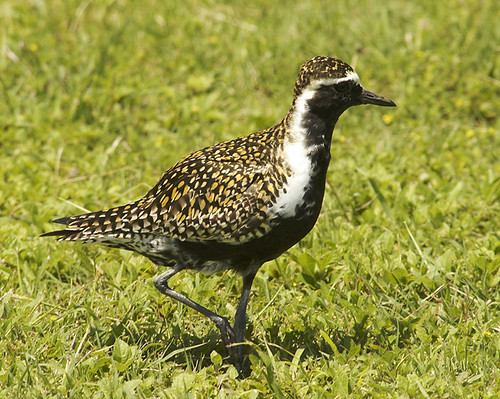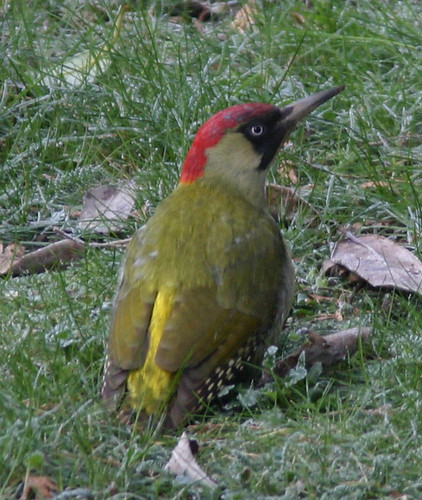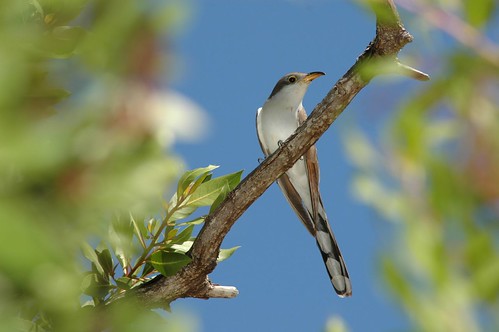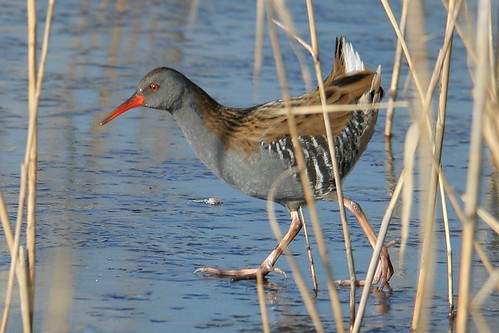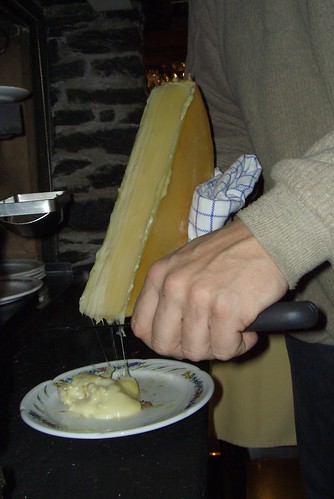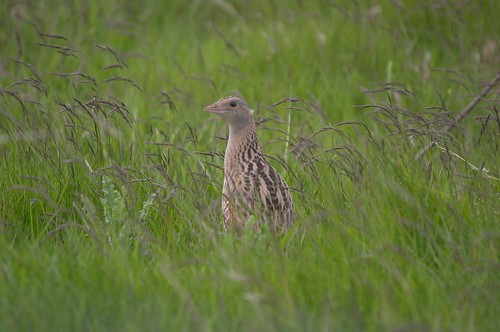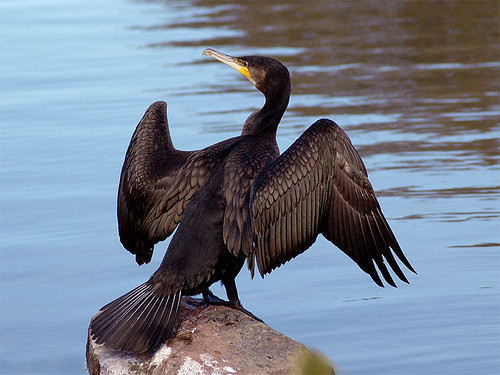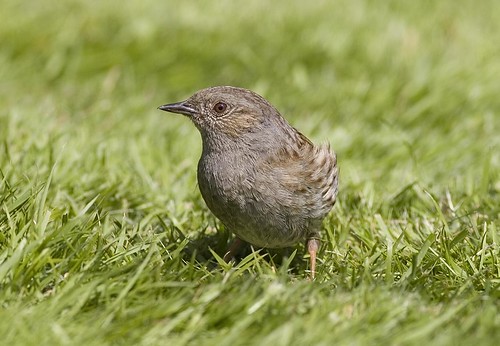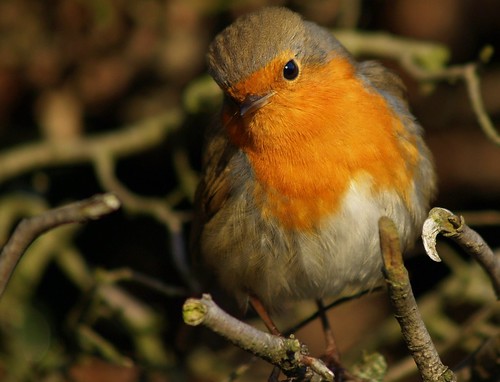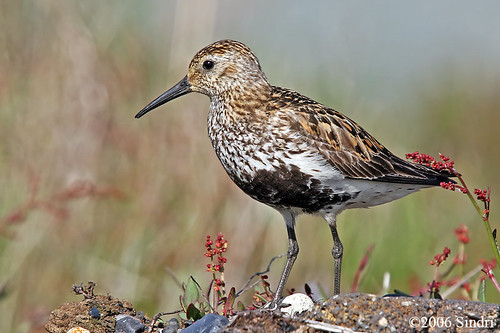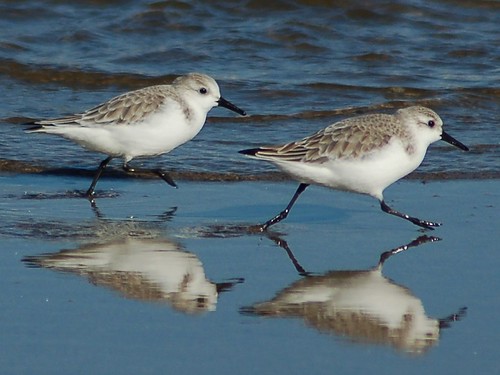Hot news of the day: I’m an uncle. My sister-in-law had a baby girl yesterday. So send positive mind rays in the general direction of Cheltenham, please.
The word ‘nuncle’ is, as I expect you know, a variation of ‘uncle’ formed by mishearing ‘mine uncle’ as ‘my nuncle’. The same with ‘Ned’ as a variation on ‘Edward’. ‘Adder’ and ‘apron’ went in the other direction: it was originally ‘a nadder’ and ‘a napron’. Similarly, while I’m on the subject, ‘pea’ is formed by misinterpreting ‘pease’ as a plural, and the same with ‘cherry’, which also originally ended in an s, as it does in the French cerise.
I vaguely thought that ‘nuncle’ was widespread in Shakespeare, but I did a search online and it turns out that only one character uses it: the Fool in King Lear, who uses it fourteen times. So I don’t know whether it was a genuine misunderstanding or just a whimsical usage. Almost baby-talk. Or informal/affectionate: in which case the fact that the Fool uses that kind of language in addressing the King is an indication of his special freedom. I suppose I could consult the OED and see if it tells me.
Looking for nuncles in Lear reminded me of what an incredible piece of writing that storm scene is, with the interplay between the mad Lear, Edgar pretending to be mad, and the Fool whose job is to act mad. Language is stretched almost to meaninglessness, and there’s an edge to it, a nastiness, that helps counterbalance the ladlesful of pathos. I find the overt artificiality fascinating as well; having the three ‘mad’ characters on stage together, and of course the blinded Gloucester who doesn’t know that one of them is his son. Obviously throughout his career Shakespeare made liberal use of coincidences and unlikely plots, but some of the late plays, like Lear, seem to move away from realism in a much more profound way. As a comparison, in Twelfth Night, when people keep getting confused between Viola and Sebastian, the unlikeliness of the situation is part of the joke. I’m not sure it even makes sense to look at Lear in those terms. it’s clearly true that the plot of King Lear is unlikely, but it seems ridiculous to say so. It’s somehow not the point.
KING LEAR:
Why, thou wert better in thy grave than to answer with thy uncovered body this extremity of the skies. Is man no more than this? Consider him well. Thou owest the worm no silk, the beast no hide, the sheep no wool, the cat no perfume. Ha! Here’s three on’s are sophisticated! Thou art the thing itself: unaccommodated man is no more but such a poor bare, forked animal as thou art. Off, off, you lendings! Come unbutton here.
[Tearing off his clothes.]Fool:
Prithee, nuncle, be contented; ’tis a naughty night to swim in. Now a little fire in a wild field were like an old lecher’s heart; a small spark, all the rest on’s body cold. Look, here comes a walking fire.
{Enter GLOUCESTER, with a torch.}EDGAR:
This is the foul fiend Flibbertigibbet: he begins at curfew, and walks till the first cock; he gives the web and the pin, squints the eye, and makes the hare-lip; mildews the white wheat, and hurts the poor creature of earth.
S. Withold footed thrice the old;
He met the night-mare, and her nine-fold;
Bid her alight,
And her troth plight,
And, aroint thee, witch, aroint thee!
It wasn’t a time with a very sensitive approach to mental health issues; people used to go to visit Bedlam for the entertainment value of seeing the madmen. And indeed there’s a scene in Webster’s The Duchess of Malfi where a bunch of actors basically come on stage to act mad for the amusement of the audience in the same freak show manner; the contrast with the portrayal of madness in Lear is striking.
Shakespeare really was a very good writer. I’m always tempted to be sceptical about his status, towering untouchably over English literature; my bloody-minded reaction to the cult of Shakespeare which treats him as though he never wrote a bad line, let alone a bad play. We’re less reverential about art these days—less reverential about everything—but still, the big names have a halo around them, as though entry into the canon equated to canonisation. I’m torn between feeling that serious, unironic celebration of the power of art is a Good Thing and a sense that once something gets tainted with sacredness it is defanged.
Anyway, I seem to have rambled from my new niece, via cherries, to ART. I shall stop before I wander any further off-topic. Hopefully responding to the birth of a daughter by quoting King Lear isn’t too much of a bad omen :)
» The photo Cherry was posted to Flickr by moogs and is used under a Creative Commons by-nc licence.

